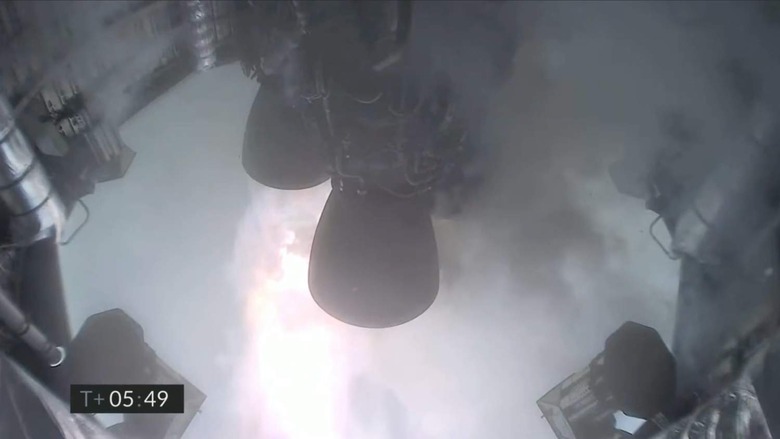Elon Musk Jokes After SpaceX Starship SN11 Test Flight Ends In Explosion
SpaceX successfully launched its latest Starship prototype, but SN11 didn't have the safe – or at least single-piece – landing that the company was hoping for. The high-altitude flight test of the newest Starship prototype tapped three Raptor engines and was designed to take the craft to around 10 kilometers (6.2 miles) above Starbase Texas.
Each of the three Raptor engines would shut down in sequence, then, just as Starship reaches apogee: the highest point in the flight. "SN11 will perform a propellant transition to the internal header tanks, which hold landing propellant," SpaceX explains, "before reorienting itself for reentry and a controlled aerodynamic descent."
Had all gone to plan, the next phase would've seen Starship SN11 descend under its own, active aerodynamic control. The four flaps on the spacecraft – two forward, and two aft – would be adjusted individually as the onboard flight computer figured out how best to land on the pad. Just before landing, the Raptors would reign and the Starship flip over, touching down right next to where it initially took off.
At least, that was the plan. Unfortunately, it appears something went awry along the way, and though full details haven't been shared it seems SN11 was destroyed. As usual, SpaceX's Elon Musk has been fairly sage about the situation.

"Looks like engine 2 had issues on ascent & didn't reach operating chamber pressure during landing burn, but, in theory, it wasn't needed," Musk tweeted. "Something significant happened shortly after landing burn start. Should know what it was once we can examine the bits later today."
Looks like engine 2 had issues on ascent & didn't reach operating chamber pressure during landing burn, but, in theory, it wasn't needed.
Something significant happened shortly after landing burn start. Should know what it was once we can examine the bits later today.
— Elon Musk (@elonmusk) March 30, 2021
Certainly, "something significant" seems like an understatement when the result is your expensive rocket prototype in pieces, but the Starship program – like SpaceX's other prototypes before it – was always designed with explosions like these as a distinct possibility. "At least the crater is in the right place," Musk joked.
It's also seen some impressive maneuvering. Starship SN10, for instance, resulted in video of the spacecraft's landing that looked more like sci-fi movie CGI than something real, a testament to just what SpaceX has achieved in the way of reusable rocket tech. Of course, SN10 also exploded too, shortly after landing, and SN9 also met a flaming end before that.
Still, it's something the company needs to get right, and consistently. "A controlled aerodynamic descent with body flaps and vertical landing capability, combined with in-space refilling, are critical to landing Starship at destinations across the solar system where prepared surfaces or runways do not exist, and returning to Earth," SpaceX explains of the tests. "This capability will enable a fully reusable transportation system designed to carry both crew and cargo on long-duration, interplanetary flights and help humanity return to the Moon, and travel to Mars and beyond."
